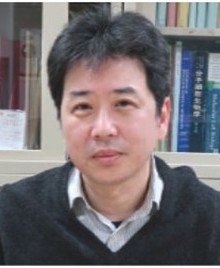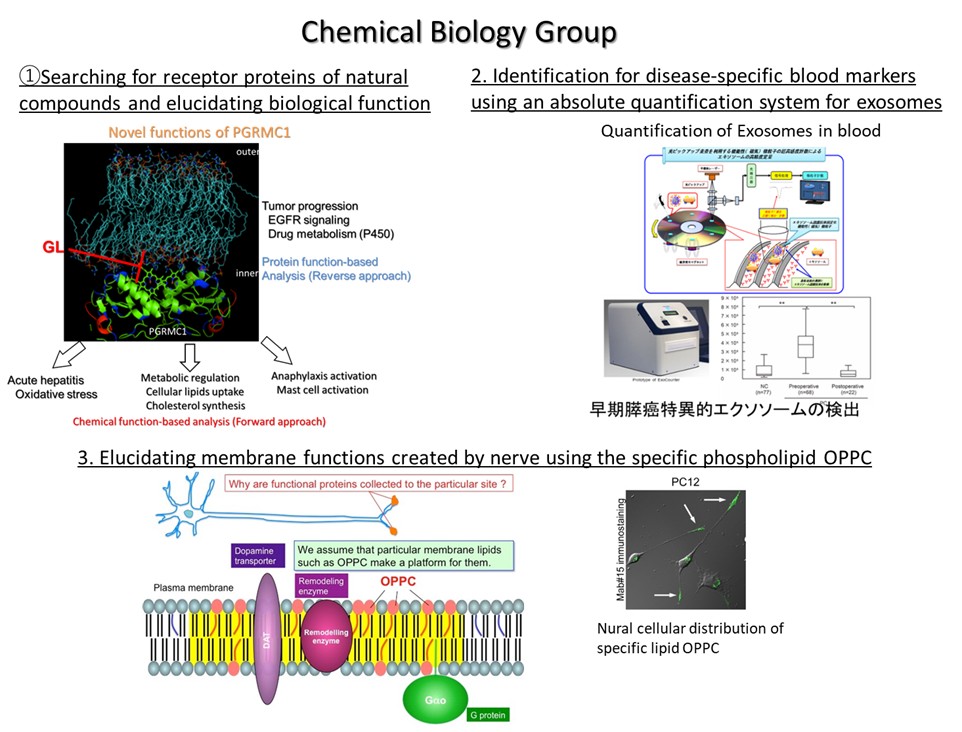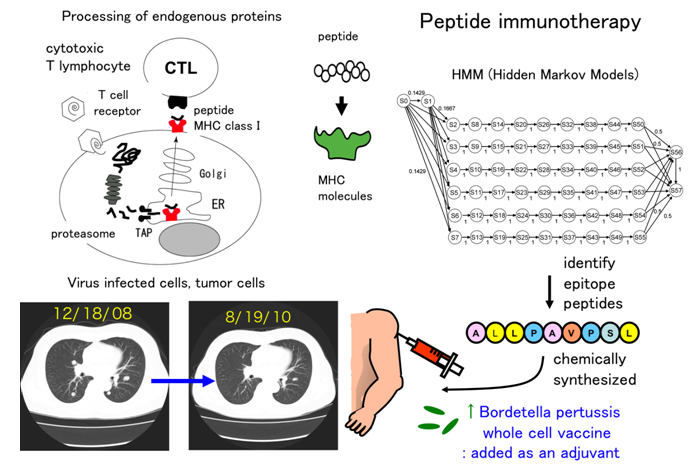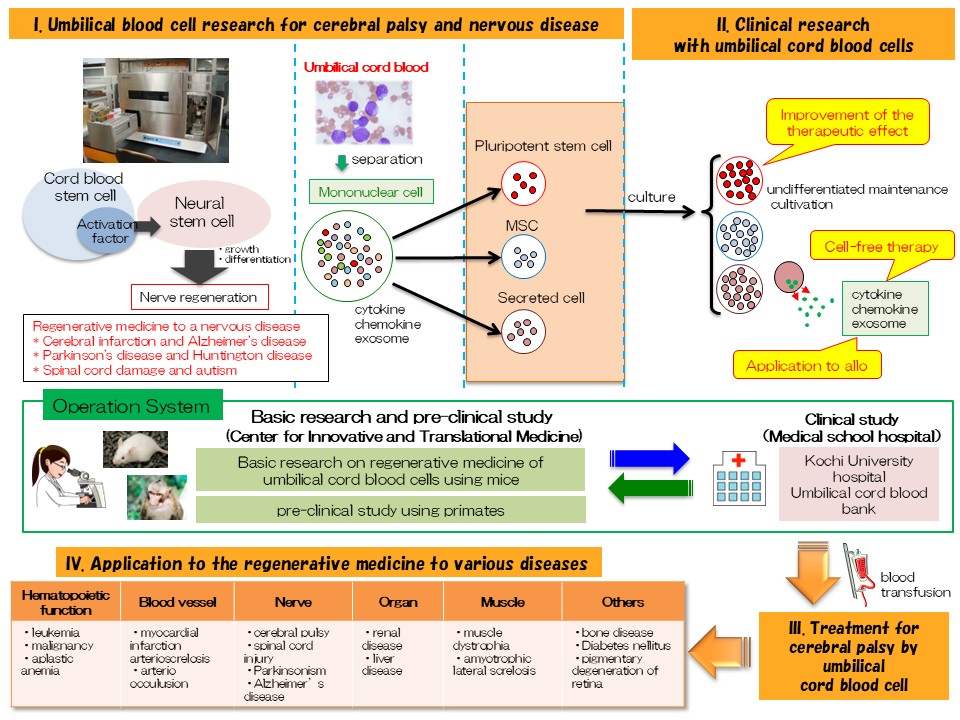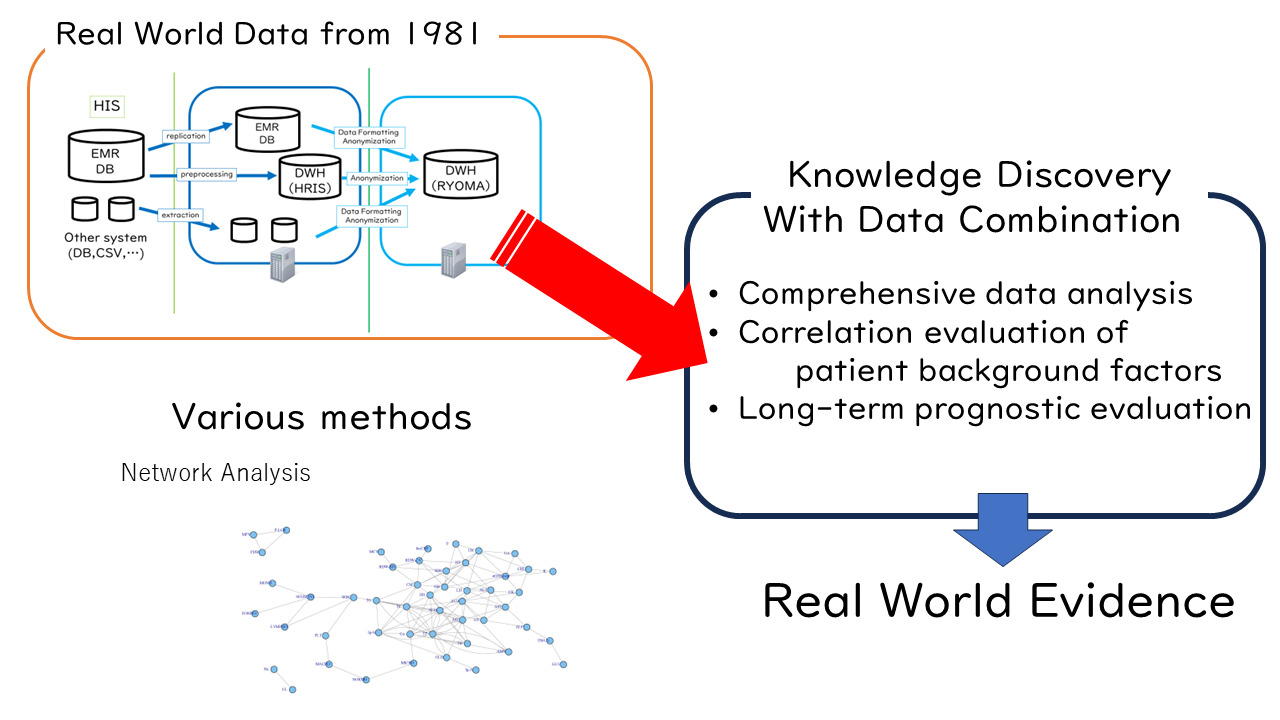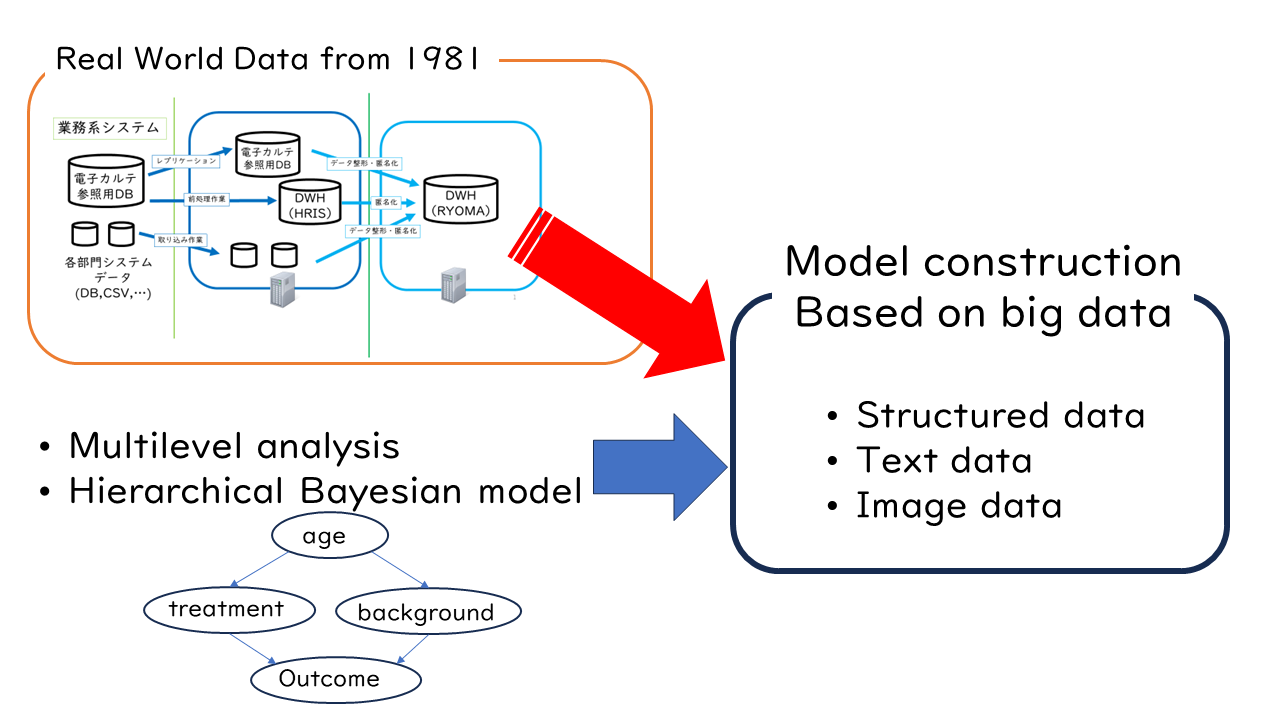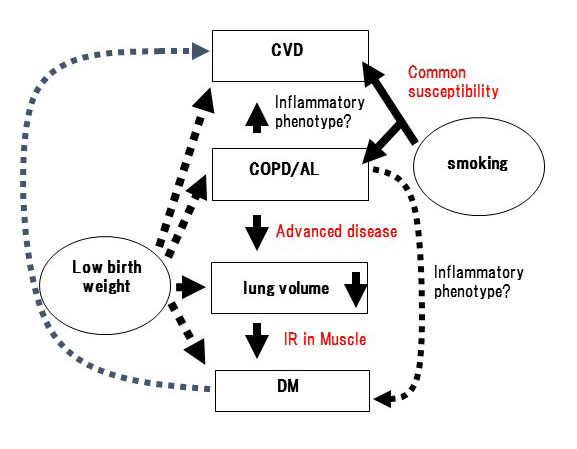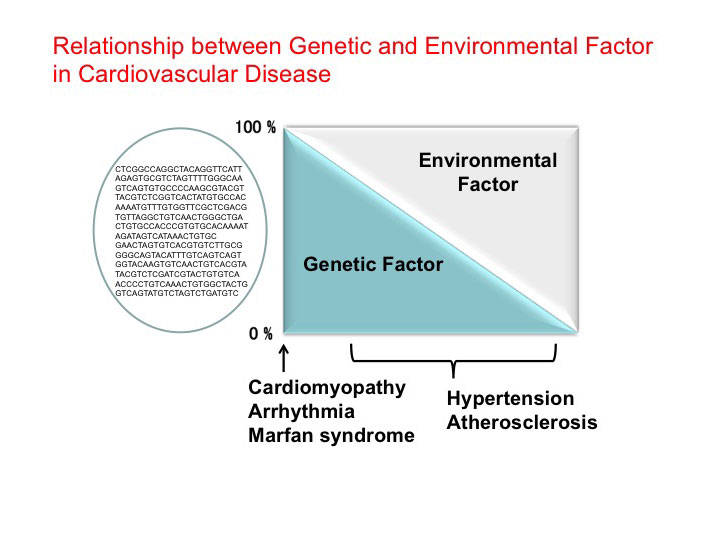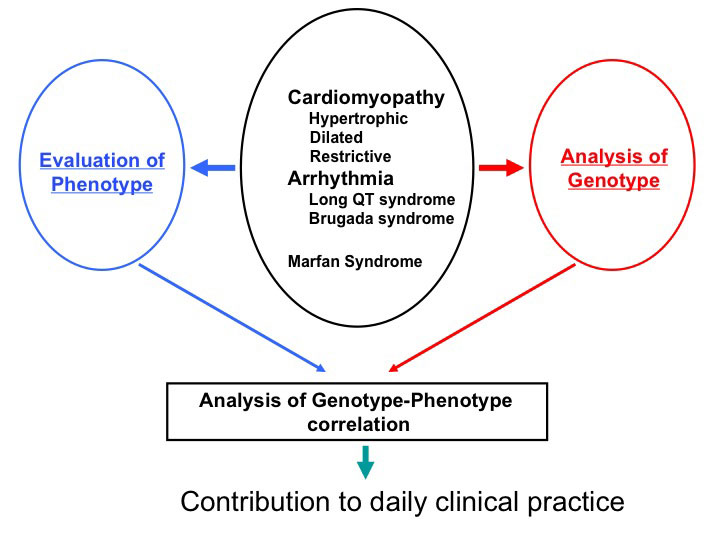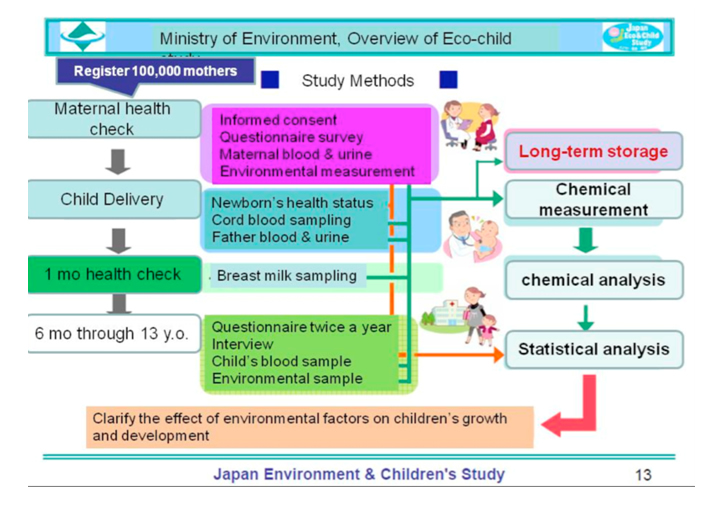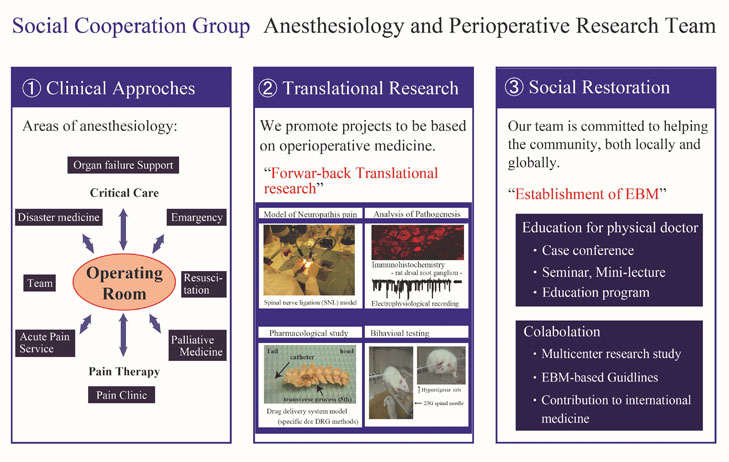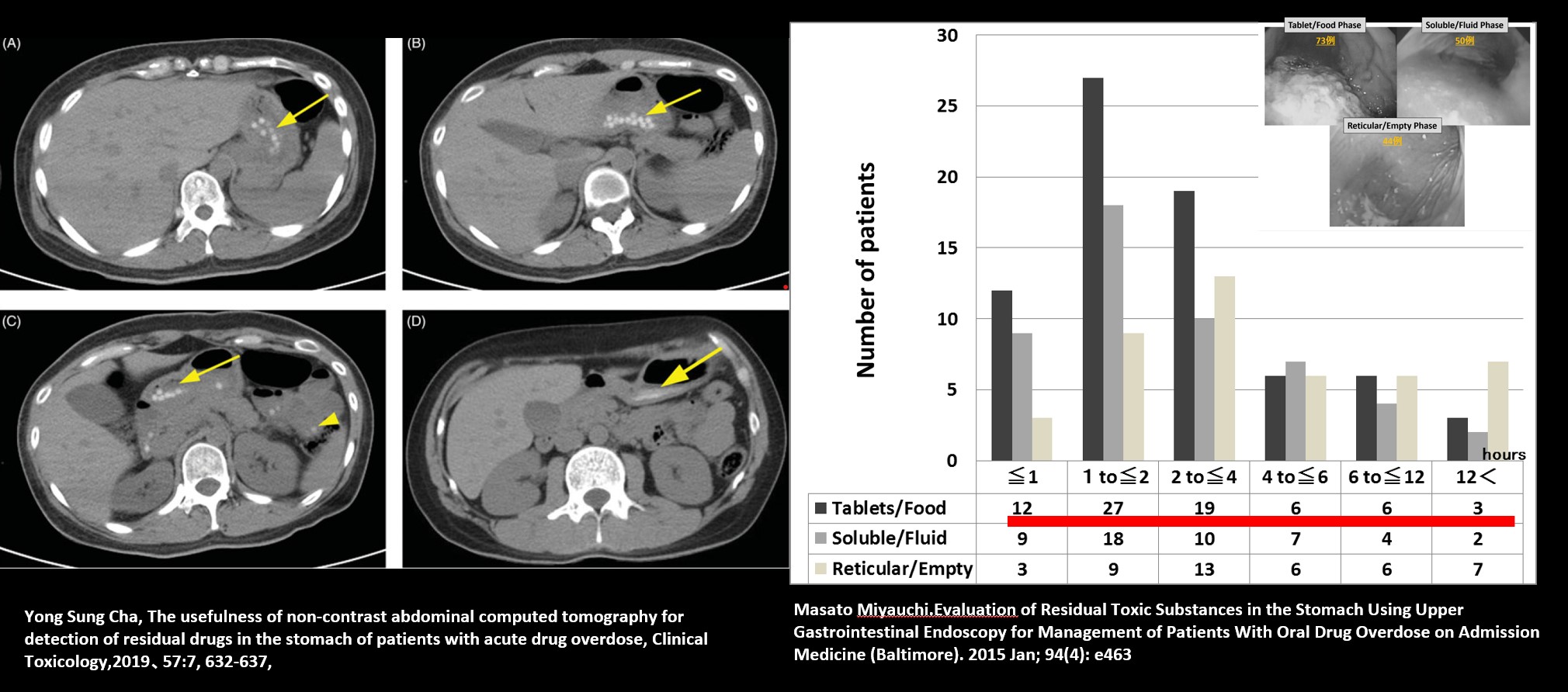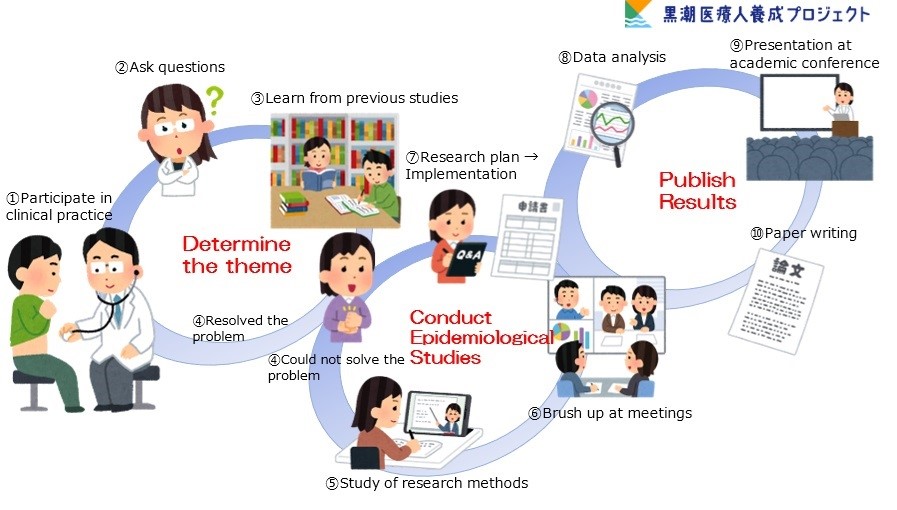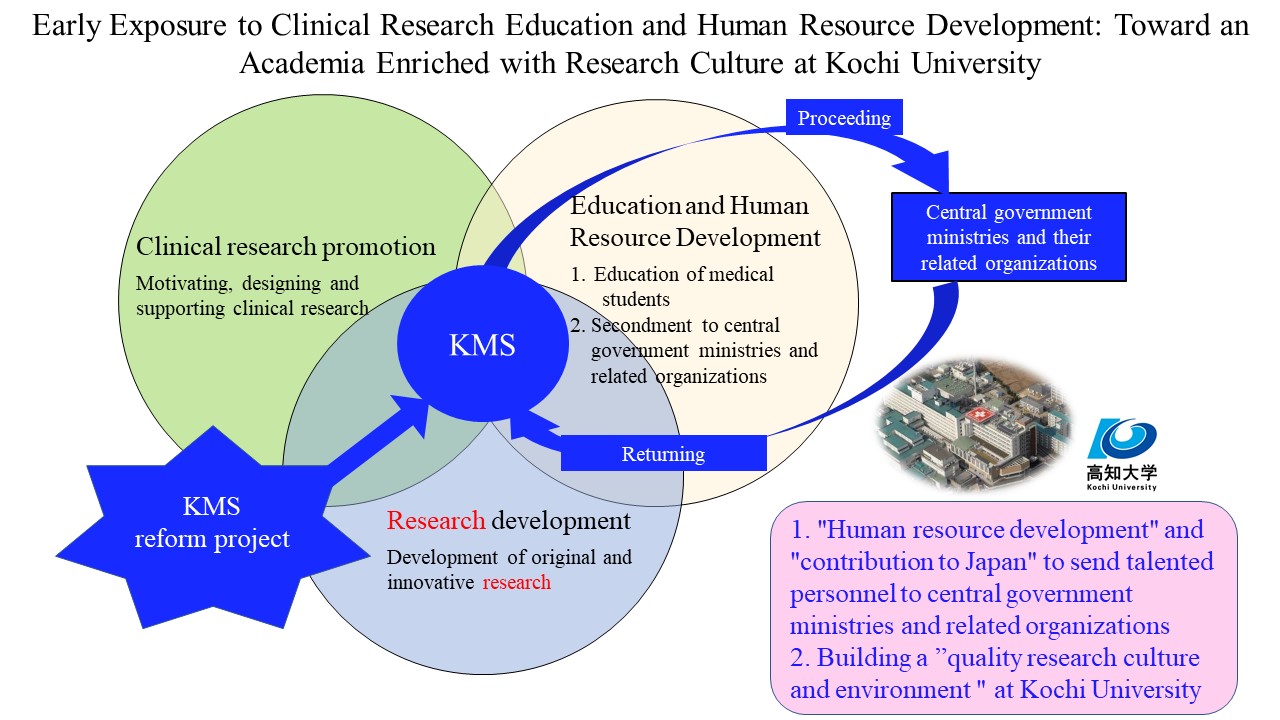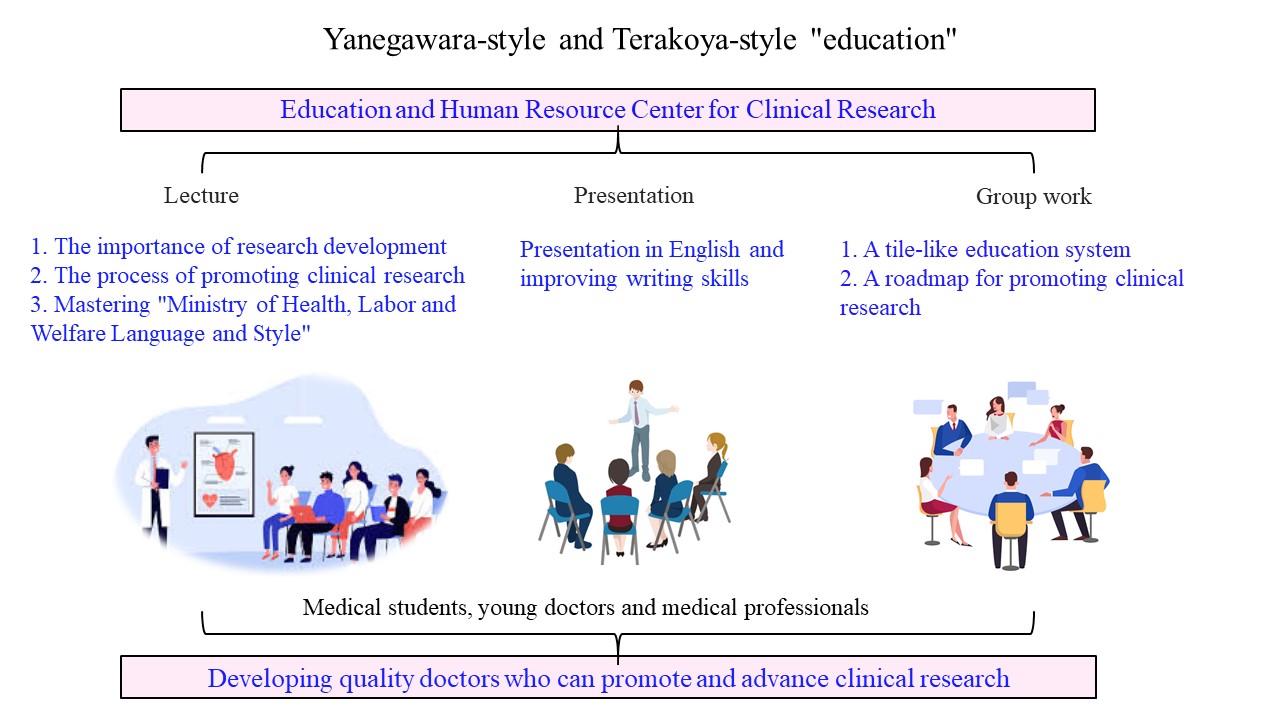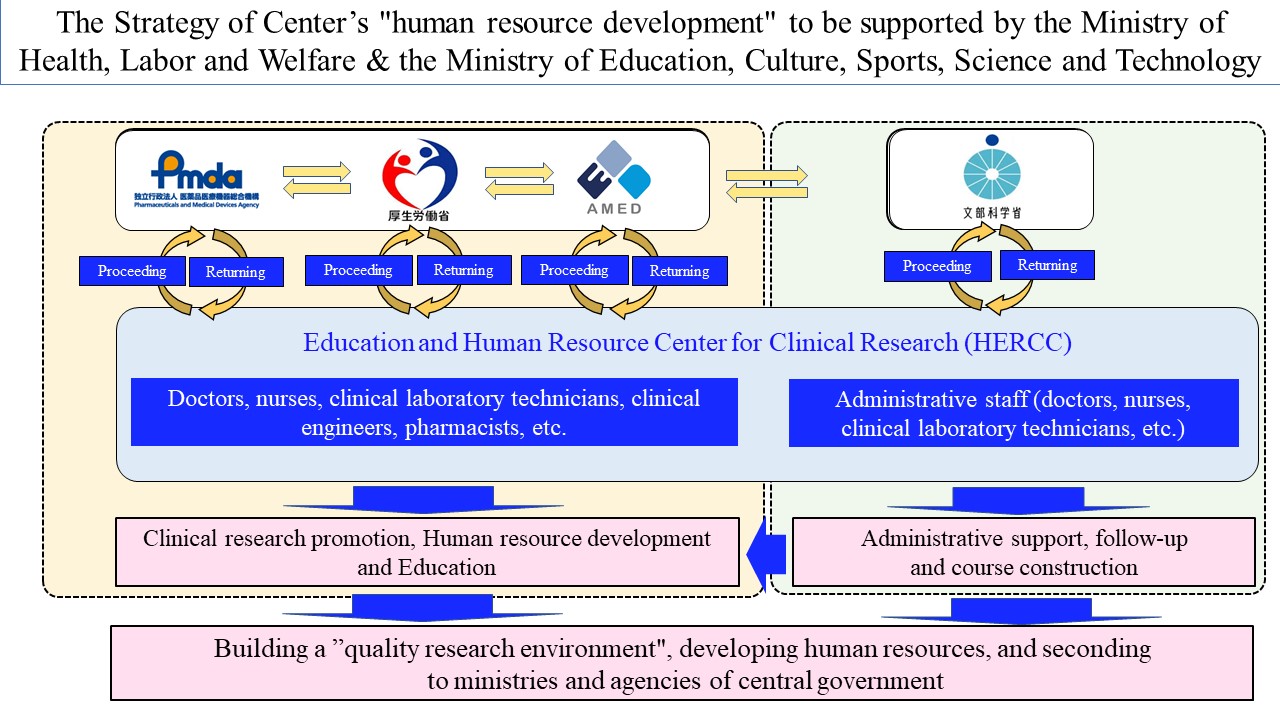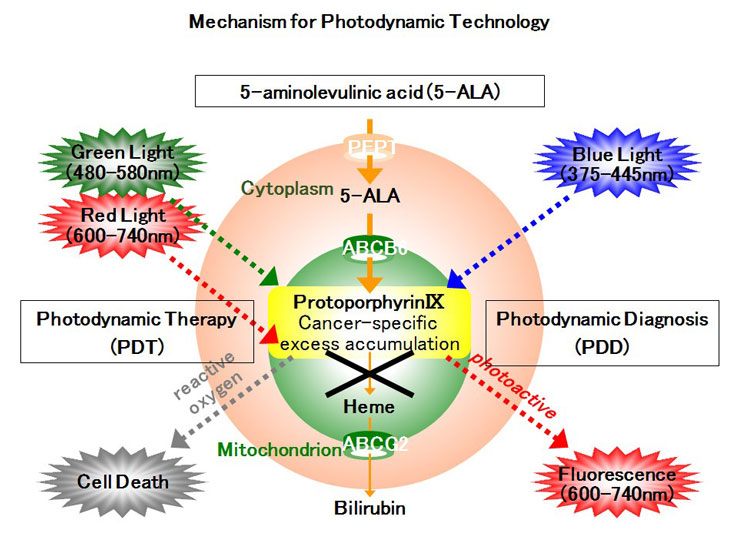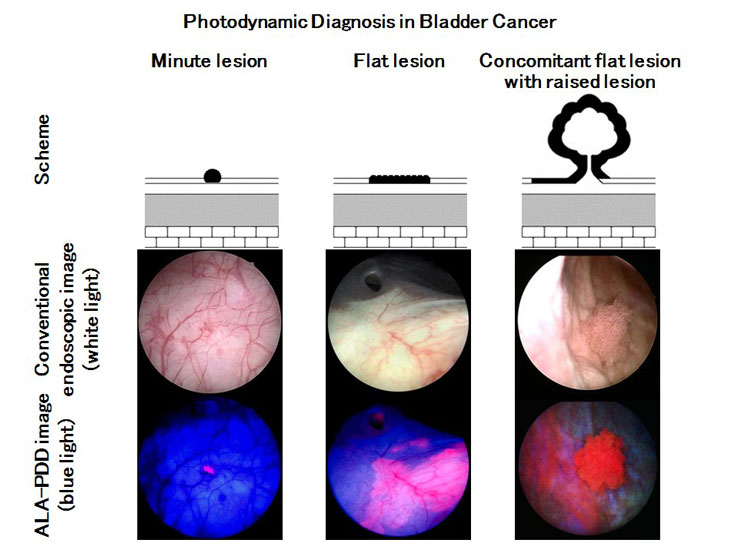

| Innovative Medicine Group | ||
|
|
Chemical Biology Analysis Team Prof. Yasuaki Kabe, PhD Professor, Department of Biochemistry, Kochi Medical School Education 1995 Graduated Tohoku University Department of Pharmacology 2001 Graduated Faculty of Biotechnology, Tokyo Institute of Technology Career 2001-2005 Psot-doctoral fellow, Faculty of Biotechnology, Tokyo Institute of Technology 2005-2009 Research Associate, Tokyo Institute of Technology 2009-2019 Lecture, Department of Biochemistry, School of Medicine, Kio University 2019-2024 Associate Professor, Department of Biochemistry, School of Medicine, Kio University 2024- Professor, Department of Biochemistry, Kochi University Medical School Award 2) Kabe Y, Suematsu M, Sakamoto S, Hirai M, Koike I, Hishiki T, Matsuda A, Hasegawa Y, Tsujita K, Ono M, Minegishi N, Hozawa A, Murakami Y, Kubo M, Itonaga M, Handa H. 3) Kabe Y, Koike I, Yamamoto T, Hirai M, Kanai A, Furuhata R, Tsugawa H, Harada E, Sugase K, Hanadate K, Yoshikawa N, Hayashi H, Noda M, Uchiyama S, Yamazaki H, Tanaka H, Kobayashi T, Handa H, Suematsu M. |
|
|
|
Outline of Research: |
|
|
In this research group, we use nanobead technology to purify receptor proteins that are targets of chemical compounds such as drugs, metabolites or nutrients. On the basis of information of drug-binding proteins, we have tried to elucidate unknown mechanism of drug function by chemical biology analysis. Furthermore, we are analyzing disease markers through clinical application of our unique biosensor Exosome measurement system, which combines nanobead technology with optical sensor devices. In addition, we are elucidating the mechanisms that control cell membrane function using lipid biochemistry techniques, identifying and analyzing the dynamics of constituent molecules on the cell membrane, and quantitatively analyzing extracellular secretory vesicles derived from the cell membrane to elucidate unknown physiological functions such as general cell functions mediated by the cell membrane and their abnormalities, and analyzing their involvement in pathological conditions. Through these analyses, we will advance research aimed at basic medicine, drug discovery, and clinical development.
Specific research is carried out in the following three major themes.
|
||
|
|
||
 |
Anti-tumor Immunotherapy Team Keiko Udaka, M.D., Ph. D. Professor, Department of Immunology, Kochi Medical School Education 1982 Bachelor of Medicine, School of Medicine, Ehime University, M.D. 1986 PhD, Graduate school of Medicine, Ehime University Career Selected papers |
|
|
|
Outline of Research: “Developing an immunotherapy against tumors” | |
|
|
||
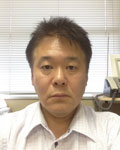 |
Urinary Disorders Research Team Motoaki Saito, MD, PhD.
Professor, Department of Pharmacology, Kochi Medical School
Education: Career: Award:
|
|
| Outline of Research: | ||
|
Molecular mechanisms and informative treatment strategies for lower urinary tract symptoms Benign prostatic hyperplasia (BPH) is a common disorder among elderly men. BPH often starts after the age of 40 years and affects about 80% of men over the age of 80. BPH causes several lower urinary tract symptoms (LUTS) such as storage, voiding and post-micturition symptoms affecting lower urinary tract. The pathogenesis of BPH/benign prostatic enlargement (BPE) is thought to be multifactorial, however, it is not fully understood. A recent clinical study proposed that hypertension, diabetes, hyperlipidemia and atherosclerosis are associated with the etiology of BPH/LUTS. Furthermore, we have previously demonstrated that the decreased prostatic blood flow is responsible for the prostatic hyperplasia by using animal models. Therefore, we consider a possible mechanism that chronic ischemia in the prostate which causes an increase in the production of reactive oxygen species and pro-inflammatory cytokines, and subsequently up-regulates growth factors which induce epithelial and stromal proliferation in the prostate. We are currently investigating the precise molecular mechanisms through how chronic ischemia in the prostate generates the LUTS by employing a pharmacological approach. |
||
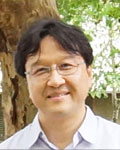
|
|
|
| Outline of Research:Understanding the neural circuit mechanism of emotion-based learning and memory through the analysis of olfactory system | ||
|
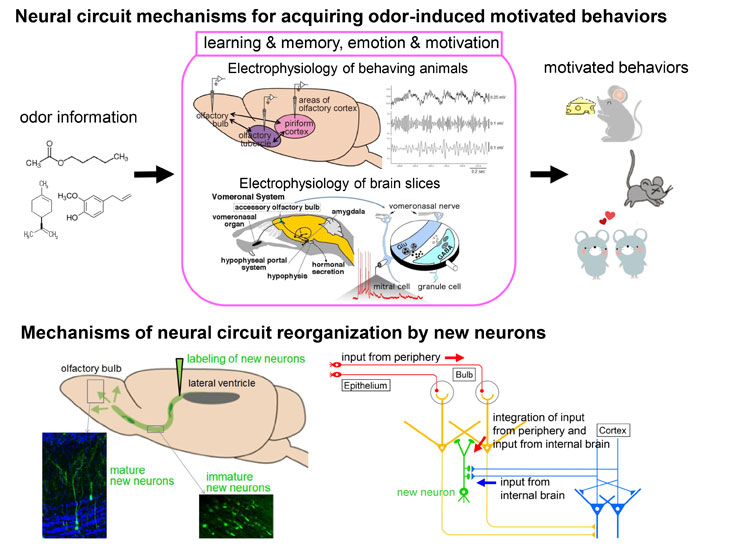
|
||
|
|
Regenerative Medicine Group | |
|
|
Cord Blood Stem Cell Team Masayuki Tsuda, Ph.D Professor, Science Research Center, Kochi University
Education
Selected papers
2)Induction of regional chemokine expression in response to human umbilical cord blood cell infusion in the neonatal mouse ischemia-reperfusion brain injury model.
3)Wang F, Baba N, Shen Y, Yamashita T, Tsuru E, Tsuda M, Maeda N, Sagara Y. CCL11 promotes migration and proliferation of mouse neural progenitor cells.
|
|
| Outline of Research: | ||
|
Cerebral palsy (CP) is a neurological disorder caused by brain damage occurring during the fetal or neonatal period. It results in lifelong impairments in motor and cognitive functions. Currently, there is no fundamental cure for CP, and available treatments are limited to symptomatic approaches such as rehabilitation. At our university, we are conducting a promising clinical study titled “Clinical Research on Autologous Umbilical Cord Blood Cell Transfusion for Pediatric Cerebral Palsy.” Umbilical cord blood cells have gained attention as a novel therapeutic option for CP due to their potential to promote brain repair and regeneration. In parallel with the clinical study, our research team has developed a neonatal mouse model of cerebral ischemia-reperfusion injury that closely mimics the key pathological features of CP. Using this model, we are working to elucidate the mechanisms underlying brain repair induced by umbilical cord blood cell transfusion. Our research focuses on the following themes. 1) Expression profiles of cerebral chemokines and cytokines in a mouse model of cerebral palsy 2) Correlation between motor and cognitive functional recovery following umbilical cord blood cell transfusion and the activation of neural stem/progenitor cells 3) Molecular mechanisms underlying neural tissue regeneration and repair mediated by umbilical cord blood cell transfusion 4) Surface antigen markers and functional phenotypes of umbilical cord blood cells
|
||
|
|
Information Healthcare Science Group | |
|
|
Medical Data-mining Team Prof. Yutaka Hatakeyama Professor, Center of Medical Information Science, Kochi Medical School
1999 Graduated Tokyo Institute of Technology, School of Engineering, Department of Computer Science 2004 Graduated Tokyo Institute of Technology, Interdisciplinary Graduate School of Science and Engineering Professional Activities: 2004-2007 Assistant Professor at Tokyo Institute of Technology 2007-2022 Associate Professor at Kochi University, Center of Medical Information Science 2022-Present Professor at Kochi University, Center of Medical Information Science
Selected papers 1.Hatakeyama, Y., Mitsuta, A., Hirota, K.: Detection algorithm for color dynamic images by multiple surveillance cameras under low luminance conditions based on fuzzy corresponding map. Applied Soft Computing Journal 8(4):1344-1353, 2008 2.Hatakeyama, Y., Kataoka, H., Nakajima, N., Watabe, T., Fujimoto, S., Okuhara, Y.: Prediction model for glucose metabolism based on lipid metabolism. Methods of Information in Medicine 53(5):357-363, 2014 3.Hatakeyama Y., Horino T., Yasui S., Komori M., Terada Y., Okuhara Y.: Incidence of acute kidney injury and decreased estimated glomerular filtration rate according to the site of cancer, Clinical and Experimental Nephrology 27, 262–271, 2023 |
|
| Outline of Research: | ||
|
|
||
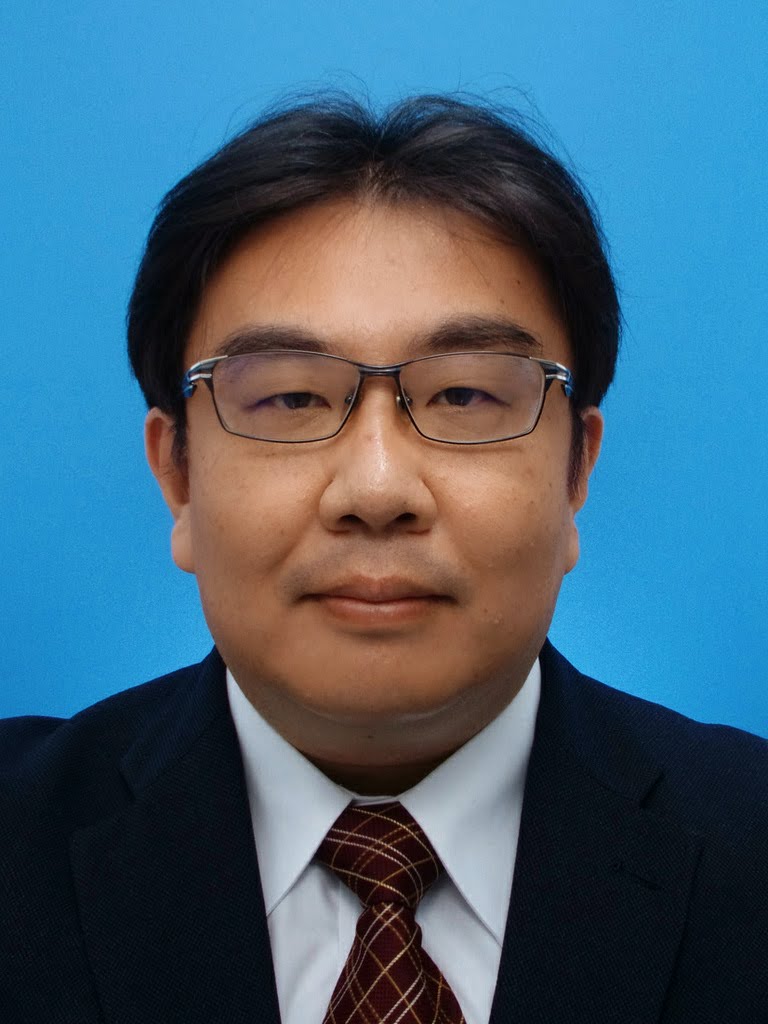
|
Disease Prediction Team Prof. Yutaka Hatakeyama Professor, Center of Medical Information Science, Kochi Medical School Studies and Degrees: 1999 Graduated Tokyo Institute of Technology, School of Engineering, Department of Computer Science 2004 Graduated Tokyo Institute of Technology, Interdisciplinary Graduate School of Science and Engineering Professional Activities: 2004-2007 Assistant Professor at Tokyo Institute of Technology 2007-2022 Associate Professor at Kochi University, Center of Medical Information Science 2022-Present Professor at Kochi University, Center of Medical Information Science
Selected papers 1.Hatakeyama, Y., Mitsuta, A., Hirota, K.: Detection algorithm for color dynamic images by multiple surveillance cameras under low luminance conditions based on fuzzy corresponding map. Applied Soft Computing Journal 8(4):1344-1353, 2008 2.Hatakeyama, Y., Kataoka, H., Nakajima, N., Watabe, T., Fujimoto, S., Okuhara, Y.: Prediction model for glucose metabolism based on lipid metabolism. Methods of Information in Medicine 53(5):357-363, 2014 3.Hatakeyama Y., Horino T., Yasui S., Komori M., Terada Y., Okuhara Y.: Incidence of acute kidney injury and decreased estimated glomerular filtration rate according to the site of cancer, Clinical and Experimental Nephrology 27, 262–271, 2023 |
|
| Outline of Research: | ||
|
|
||
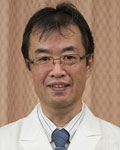 |
Investigation team for correlation between comorbidities and chronic respiratory diseases Education 1983 Graduated from Toyama Medical and Pharmaceutical University Career 1983-1984 Toyama Medical and Pharmaceutical University Hospital 1984-1986 Saiseikai-Takaoka Hospital 1986-1988 Research fellow, University of Chicago 1989-1991 Assistant professor, Toyama Medical and Pharmaceutical University 1991-2000 Assistant professor, Ehime University 2000-2003 Lecturer, Ehime University 2003-2005 Lecturer, Hiroshima University 2005-2007 Associate professor, Hiroshima University 2007-present Professor, Kochi University 2014-present Director, Kochi University Hospital Selected papers 1) Airflow limitation in smokers is associated with subclinical atherosclerosis.Iwamoto H, Yokoyama A, Kitahara Y, Ishikawa N, Haruta Y, Yamane K, Hattori N, Hara H, Kohno N. Am J Respir Crit Care Med. 2009;179(1):35-40. 2)Chronic hepatitis C virus infection is associated with more severe asthma.Nakashima T, Yokoyama A, Ohnishi H, Yamasaki M, Shiode M, Haruta Y, Hattori N, Hozawa S, Yamakido H, Kohno N. Allergol Int. 2011;60(3):299-304. 3)Cross-sectional and prospective study of the association between lung function and prediabetes.Yamane T, Yokoyama A, Kitahara Y, Miyamoto S, Haruta Y, Hattori N, Yamane K, Hara H, Kohno N. BMJ Open. 2013;3(2). |
|
| Outline of Research: | ||
|
(Schematic illustration)
|
||
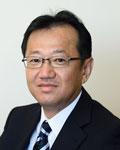 |
Genetic Analysis Team of Cardiovascular Disease 1982-1988 Kochi Medical School, Kochi, Japan Career 1988-1990 Resident at the Department of Medicine and Geriatrics, Kochi Medical School, Japan 1990-1991 Susaki Kurosio Hospital, Japan 1991-1994 Resident at the National Cardiovascular Center, Osaka, Japan 1994-2009 Assistant Professor at the Department of Medicine and Geriatrics, Kochi Medical School, Japan 2009-2013 Associate Professor at the Department of Medicine and Geriatrics, Kochi Medical School, Japan 2013-present Professor at the Department of Medicine and Geriatrics (Department of Cardiology, Neurology and Aging Science), Kochi Medical School, Japan Selected papers 1) Lifelong left ventricular remodeling of hypertrophic cardiomyopathy caused by a founder frameshift deletion mutation in the cardiac Myosin-binding protein C gene among Japanese. Kubo T, Kitaoka H, Okawa M, Matsumura Y, Hitomi N, Yamasaki N, Furuno T, Takata J, Nishinaga M, Kimura A, Doi YL. J Am Coll Cardiol. 2005 Nov 1;46(9):1737-43 2) Left ventricular remodeling of hypertrophic cardiomyopathy: longitudinal observation in rural community. Kitaoka H, Kubo T, Okawa M, Hitomi N, Furuno T, Doi YL. Circ J. 2006 Dec;70(12):1543-9. 3) Prevalence and distribution of sarcomeric gene mutations in Japanese patients with familial hypertrophic cardiomyopathy. Otsuka H, Arimura T, Abe T, Kawai H, Aizawa Y, Kubo T, Kitaoka H, Nakamura H, Nakamura K, Okamoto H, Ichida F, Ayusawa M, Nunoda S, Isobe M, Matsuzaki M, Doi YL, Fukuda K, Sasaoka T, Izumi T, Ashizawa N, Kimura A. Circ J. 2012;76(2):453-61. |
|
| Outline of Research: | ||
|
|
||
| Social Cooperation Group | ||
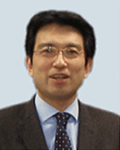
|
Eco-Children Team Narufumi Suganuma, M.D., Ph.D. Professor, Department of Environmental Medicine, Kochi Medical School
EDUCATION PROFESSIONAL TRAINING & EMPLOYMENT 2010 - Vice President, Kochi University
Selected papers 2: Arakawa H, Fujimoto K, Honma K, Suganuma N, Morikubo H, Saito Y, Shida H, Kaji Y. Progression from near-normal to end-stage lungs in chronic interstitial pneumonia related to silica exposure: long-term CT observations. AJR Am J Roentgenol. 2008 Oct;191(4):1040-5. PubMed PMID: 18806140. 3: Arakawa H, Honma K, Saito Y, Shida H, Morikubo H, Suganuma N, Fujioka M. Pleural disease in silicosis: pleural thickening, effusion, and invagination. Radiology. 2005 Aug;236(2):685-93. PubMed PMID: 16040925. |
|
| Outline of Research: | ||
|
1. -For the Brighter Future for the Healthy Children- 2. What is happening with Children today? The importance of the JECS- In Japan, the diseases which could be possibly caused by environmental factors, such as the chemical exposures and unhealthy lifestyle, have been increasing. For instance, the number of asthma patients has tripled in the last twenty years, congenital abnormalities have doubled in the last twenty five years, and there are 1. 5 times as many obese children as thirty years ago. The JECS sheds the light on the effect of chemical exposures and social/lifestyle factors on 1) pregnancy/reproductive health; 2) birth defects; 3) mental/neuronal development; 4) immunity/allergies and; 5) metabolism/internal secretion. Collaborating with other university departments, our goal is to provide healthier environment for the next generations and to raise specialists in environmental medicine, through interdisciplinary and long-term analysis on environmental factors, which are complicatedly intertwined with social and lifestyle factors.
|
||
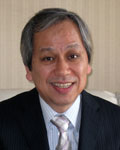
|
Anesthesiology and Perioperative Research Team Masataka Yokoyama, M.D., Ph.D. Professor, Department of Anesthesiology and Intensive Care Medicine, Kochi Medical School
EDUCATION CAREER Selected papers 2) Omori M, Yokoyama M, Matsuoka Y, Kobayashi H, Mizobuchi S, Itano Y, Morita K, Ichikawa H. Effects of selective spinal nerve ligation on acetic acid-induced nociceptive responses and ASIC3 immunoreactivity in the rat dorsal root ganglion. Brain Res. 2008 Jul 11;1219:26-31 3) Yokoyama M, Hanazaki M, Fujii H, Mizobuchi S, Nakatsuka H, Takahashi T, Matsumi M, Takeuchi M, Morita K. Correlation between the distribution of contrast medium and the extent of blockade during epidural anesthesia. Anesthesiology. 2004 Jun;100(6):1504-10 |
|
| Outline of Research: | ||
|
At the Kochi University Department of Anesthesiology and Intensive Care Medicine, we contribute to improving the health of the community in all areas of anesthesiology, including cardiac, thoracic, obstetrics, neurological, pain, and intensive care. Our mission is to be the world leader in patient care, advancing basic science and clinical research, and training tomorrow's leaders in academic anesthesiology and intensive care medicine. Faculty members are deeply committed to achieving excellence in education. Our academic programs emphasize excellence in clinical practice and advanced research. A number of graduates and research students have progressed to undertake research degrees. Our department conducts a broad range of epidemiological, clinical and basic science research. Experts from multiple disciplines study specific pathology and disorders in order to improve human health and well-being. The specific research areas are as follows: 1) postoperative cognitive dysfunction, 2) neuropathic pain 3) respiration and circulation dynamics, 4) perioperative nutrition, and 5) perioperative outcomes.
|
||
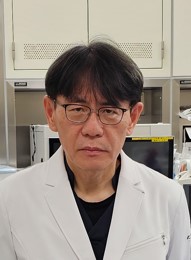
|
Emergency Medicine Team Masato Miyauchi,M.D, Ph.D. Professor, Department of Disaster and Emergency Medicine, Kochi Medical School
EDUCATION Career
Selected papers 2.Miyauchi M, Hayashida M, Yokota H: Successful retrieval using ultrathin transnasal esophagogastroduodenoscopy of a significant amount of residual tricyclic antidepressant following serious toxicity: a case report. Int J Emerg Med, 22(6), 39, 2013 3.Miyauchi M, Hisayasu S, Shimada T:Influenza Fusogenic Peptide in DNA Complex Enhances Asialoglycoprotein Receptor-Mediated Gene Transfer to Hepatoma Cells: A Strategy for Liver-Targeting Gene Therapy, J Clin Biochem Nutr, Vol. 23, 85-93, 1997 |
|
| Outline of Research: | ||
|
(1)Research on improving disaster medical care systems in anticipation of Nankai Trough earthquake (2)Usefulness of image diagnosis with abdominal CT and upper esophagogastroduodenoscopy in gastrointestinal decontamination In the Position Statements published in 1997 and the successive Positionpaper and Position paper update, the indication for gastric lavage depends on the physician in charge with no clear time setting for the indication of gastrointestinal decontamination. However, at the beginning of treatment, residual drug in the stomach is estimated based on the duration after intake,and there is the possibility that the drug remains depending on the type of drug, such as sustained preparations or enteric tablets. In addition,it was reported that various factors, such as food intake, general conditions, including dehydration, and intake of a drug to induce intestinal hypoperistalsis, were related with various drug forms and amounts; for example, a drug maintained its form in the gastrointestinal tract including the stomach, or a drug was dissolved. Thus, the evaluation of residual drug in the stomach and gastrointestinal tract, based on CT images or upper esophagogastroduodenoscopy is useful for the diagnosis of poisoning and may affect therapeutic policies, including gastrointestinal decontamination. On the other hand, upper esophagogastroduodenoscopy may be effective in the evaluation of residual drug in the gastrointestinal tract and decontamination of intoxicating substances, such as residues of toxic drugs and clots.
|
||
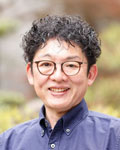
|
Regional General Medicine and Clinical Epidemiology Team Prof. Kenei Sada Specially appinted Professor, Department of Clinical Epidemiology, Kochi Medical School
EDUCATION Career
Award
Selected papers 2.Clinical practice guidelines of the Japan Research Committee of the Ministry of Health, Labour, and Welfare for Intractable Vasculitis for the management of microscopic polyangiitis and granulomatosis with polyangiitis: The 2023 update. Sada KE, Nagasaka K, Kaname S, Nango E, Kishibe K, Dobashi H, Hiromura K, Kawakami T, Bando M, Wada T, Amano K, Murakawa Y, Harigai M.Mod Rheumatol. 2023: road081. 3.Bicarbonate concentration as a predictor of prognosis in moderately severe COVID-19 patients: A multicenter retrospective study.Sada KE, Yamamoto R, Yano A, Miyauchi A, Kawamura M, Ito H.PLoS One. 2022;17(6):e0270141. |
|
| Outline of Research: | ||
|
The Challenge of Training Local Medical Professionals 1.Outline of the Kuroshio Medical Personnel Training Project 2.Mission of This Research Group 3.Roles and Learning for Course Participants
|
||
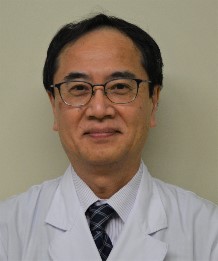
|
Education and Human Resource Center for Clinical Research (EHRCCR) Team Prof. Mikiya Fujieda Specially appinted Professor and Director of EHRCCR, Kochi Medical School
EDUCATION Career
Award
Selected papers 2.Kikuchi H, Saitoh S, Tsuno T, Hosoda R, Baba N, Wang F, Mitsuda N, Tsuda M, Maeda N, Sagara Y, Fujieda M. Safety and feasibility of autologous cord blood infusion for improving motor function in young children with cerebral palsy in Japan: A single-center study. Brain & Development 44: 681-689, 2022 doi: 10.1016/j.braindev. 2022.08.004 3.Mitsuda N, Eitoku M, Yamasaki K, J-P NA, Fujieda M, Maeda N, SuganumaN,Japan Environment and Children’s Study (JECS) Group. Association between maternal cholesterol level during pregnancy and placental weight and birthweight ratio: data from the Japan Environment and Children’s Study. BMC Pregnancy and Childbirth 23: 484, 2023 doi: 10.1186/s12884-023-05810-3 |
|
| Outline of Research: | ||
|
It is important and unmet need for medical institutions to develop creative ideas and original research (seeds) and
their integration into clinical research that may contribute to improving medical health care in Japan.
|
||
| Innovative Medical Engineering Group | ||
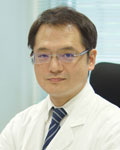
|
Interventional Radiology Team Takuji Yamagami, M.D., Ph.D. Professor, Department of Radiology, Kochi Medical School Selected papers 1) Yamagami T, Arai Y, Matsueda K, Inaba Y, Sueyoshi S, Takeuchi Y: The cause of nontumorous defects of portal perfusion in the hepatic hilum revealed by CT during arterial portography. AJR Am J Roentgenol 172: 397-402, 1999 2) Yamagami T, Kato T, Iida S, Tanaka O, Nishimura T: Value of transcatheter arterial embolization with coils and n-butyl cyanoacrylate for long-term hepatic arterial infusion chemotherapy. Radiology 230: 792-802, 2004 3) Yamagami T, Yoshimatsu R, Kajiwara K, Ishikawa M, Matsumoto T, Kakizawa H, Toyoda N, Hasebe T, Awai K: Effectiveness of combined use of imprint cytological and histological examination in CT-guided tissue-core biopsy. Eur Radiol 24: 1127-1134, 2014 |
|
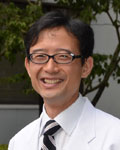
|
Orthopaedics-related Engineering Team
Masahiko Ikeuchi, MD
Professor, Department of Orthopaedic Surgery, Kochi Medical School Education 1989-1995 Kochi Medical School, Japan Career 1995-1998 Orthopaedic surgeon, Kochi Medical School, Japan 1999-2001 Orthopaedic surgeon, Hosogi Hospital, Japan 2001-2002 Orthopaedic surgeon, Tokyo teishin hospital, Japan 2002-2003 Orthopaedic surgeon, Kochi red cross hospital, Japan 2003-2007 Assistant professor, Kochi Medical School, Japan 2007-2008 Research fellow, Iowa University Medical School, USA 2009-2012 Lecturer, Kochi Medical School, Kochi University, Japan 2013-2014 Associate professor, Kochi Medical School, Kochi University, Japan 2014-present Professor, Kochi Medical School, Kochi University, Japan Selected papers 1) Ikeuchi M, Yamamoto H, Shibata M, Otani M (2001). Mechanical augmentation of the vertebral body by calcium phosphate cement injection. J Orthop Sci 6: 39-45. 2) Izumi M, Ikeuchi M, Mitani T, Taniguchi S, Tani T (2010). Prevention of venous stasis in the lower limb by transcutaneous electrical nerve stimulation. Eur J Vasc Endovasc Surg 39, 642-645. 3) Ikeuchi M, Ushida T, Izumi M, Tani T (2011). Percutaneous radiofrequency treatment for refractory antero-medial pain of osteoarthritic knees. Pain Med 12: 546-51. |
|
| Outline of Research: | ||
|
(1) Pulmonary embolism is a fatal postoperative complication arising from the deep vein thrombosis (DVT) in the limbs. As the so-called ‘post-operative’ DVT is ‘intra-operative’ in origin in most cases, any prophylactic measure should start during, rather than after the operation. The intermittent pneumatic compression (IPC) devices for the legs, commonly used as a mechanical prevention of DVT, are not applicable to the legs undergoing operation despite the highest incidence of DVT. Our method of thromboprophylactic transcutaneous electrical nerve stimulation (TpTENS) can circumvent this problem. TpTENS using a pair of sterilized surface stimulating electrodes can be carried out during hip and knee surgeries to prevent DVT in the leg under operation, overcoming the inherent limitations of IPC. Our experimental data in humans, detailed previously, confirmed that TpTENS applied to the peroneal nerve at a rate of 10/s promoted the ‘pump action’ with an artificial muscle contraction, increasing the popliteal vein velocity and flow volume more than when performing IPC. We are currently conducting a prospective trial on hip and knee surgeries to verify the clinical value of this technique in the prevention of DVT. We are also developing neurostimulating equipment with optimal characteristics specified for this purpose, since a TpTENS device should be commercialized to make this technique popular as a simple, easy to use, and readily available one. (2) Japan is moving toward an aging society at an unprecedented speed, resulting in a steady increase in the number of elderly people who are chairbound or bedridden. We have developed specially designed assistive devices for people who have difficulty in walking and transferring unassisted to help them maintain mobility and continue an active lifestyle. We are currently developing a special machine of walking exercises for the elderly with gait disturbance. Unlike conventional wheeled walkers requiring much open space for training, our machine contains an electronically controlled treadmill on a turntable with stable support for protecting against falls, allowing the user to safely train using walking exercises not only in a forward direction but also backwards and diagonally. |
||
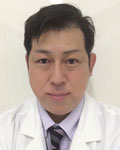
|
Photodynamic Medicine Team Keiji Inoue, M.D., Ph.D. Professor, Department of Urology, Kochi Medical School Education 1989 MD, Kochi Medical School 1994 PhD, Graduate School in Kochi Medical School Career 1996-1997 Instructor at Department of Urology in Kochi Medical School 1997–1999 Post-Doctoral Research Fellow at Department of Cancer Biology in MD Anderson Cancer Center 2002–2005 Assistant Professor at Department of Urology in Kochi Medical School 2005–2016 Associate Professor at Department of Urology in Kochi Medical School 2016-Present Professor at Department of Urology in Kochi Medical School Award 1999 AACR-AFLAC Scholar in Cancer Research Award 2005 Olympus Award from the Japanese Society of Endourology and ESWL 2012 Aso Award from the Japanese Society of Endourology 2013 Award from the Japanese Urological Association 2013 Award from the ALA and Porphyrin Research Society Selected papers 1) Inoue K, Takashi K, Kamada M, Shuin T, Kurabayashi A, Furihata M, Fujita H, Utsumi K, Sasaki J: Regulation of 5-aminolevulinic Acid-mediated Protoporphyrin IX-accumulation in Human Urothelial Carcinomas. Pathobiology, 76 (6): 303-14, 2009. 2) Inoue K, Fukuhara H, Shimamoto T, Kamada M, Iiyama T, Miyamura M, Kurabayashi A, Furihata M, Tanimura M, Watanabe H, Shuin T: Comparison between Intravesical and Oral Administration of 5-aminolevulinic Acid in the Clinical Benefit of Photodynamic Diagnosis for Non-muscle Invasive Bladder Cancer. Cancer 118 (4): 1062-74, 2012. 3) Inoue K, Fukuhara H, Kurabayashi A, Furihata M, Tsuda M, Nagakawa K, Fujita H, Utsumi K, Shuin T: Photodynamic Therapy involves Anti-Angiogenic Mechanism and is Enhanced by Ferrochelatase Inhibitor in Urothelial Carcinoma. Cancer Sci. 104 (6): 765-72, 2013. |
|
| Outline of Research: | ||
|
5-Aminolevulinic acid (5-ALA), developed by Malik et al. in 1987, has recently been attracting attention as a third-generation photosensitive substance. 5-ALA is a natural amino acid that has existed in animals and plants for 3.6 billion years, and is a common precursor of hemoglobin and chlorophyll. 5-ALA is an endogenous porphyrin synthesized from succinyl CoA and glycine by 5-ALA-synthesizing enzymes in mitochondria. It is converted to protoporphyrinogenⅨ and then to a photoactive substance, protoporphyrinⅨ (PpⅨ), in mitochondria through several precursors in the cytoplasm, such as porphobilinogen, uroporphyrinogen III, and coproporphyrinogen III. Intracellular iron is then inserted into PpⅨ by a catalyst, ferrochelatase, and metabolized to heme and bilirubin. Exogenously administered 5-ALA is rapidly incorporated into the cytoplasm and biosynthesized into PpⅨ in mitochondria, similarly to endogenous ALA, but the negative feedback mechanism acts depending on the heme synthesis level in the metabolic process of PpⅨ in normal cells, and PpⅨ synthesis is the rate-limiting step. In contrast, in cancer cells, elevations of the β-transporter (gamma-aminobutyric acid (GABA) receptor) and porphobilinogen diaminase activity levels promote PpⅨ biosynthesis. Moreover, PpⅨ metabolism is inhibited due to enhanced transferrin receptor activity and reduced ferrochelatase activity, resulting in the marked progression of PpⅨ biosynthesis and accumulation. These phenomena involved in PpⅨ biosynthesis and metabolism are considered to be due to the common biological characteristic of cancers: preference for anaerobic metabolism of various abnormal enzyme activities and cancers (Warburg effect). Since PpⅨ possesses photoactivity, it emits red fluorescence when it is excited by light irradiation at a specific wavelength, mainly visible blue light (375-445 nm), and cancer cells can be accurately identified by detecting the fluorescence. This is the mechanism of PDD employing 5-ALA (ALA-PDD). Similarly, when PpⅨ is excited by light irradiation at a specific wavelength and low output, mainly visible red light (600-740nm) or visible green light (480-580nm), reactive oxygen, such as singlet oxygen, is produced in and injures cancer cells upon energy conversion from the excited state, in which PpⅨ absorbs photo energy, to the baseline condition. This is the mechanism of PDT employing 5-ALA (ALA-PDT). ALA-PDD and ALA-PDT are photodynamic technologies based on the common biological characteristic of cancers, and are expected as new diagnostic and therapeutic strategies for many cancers.
|
||
| Research Support Group | ||
|
Corresponding to Prof. Koichi Honke
Department of Biochemistry, Kochi Medical School Kohasu, Oko-cho, Nankoku, Kochi 783-8505, Japan |
